Report Details
Not found what are you looking for

Pharma & Healthcare
Biologics Market Size, Share & Analysis By Source Type (Microbial, Mammalian), By Product (Monoclonal Antibodies, Vaccines, Recombinant Proteins, Antisense & RNAi Therapeutics, Others), By Manufacturing (In-house, Outsourced), By Disease (Oncology, Infectious Diseases, Immunological Diseases, Cardiovascular Disorders, Hematological Disorders, Others), By Region (North America, Europe, Asia Pacific, Latin America, and the Middle East & Africa), and Growth Forecasts to 2032
By Type : Microbial, Mammalian
By Application : Oncology, Infectious Diseases, Immunological Diseases, Cardiovascular Disorders, Hematological Disor
Description
ToC
Companies
Speak with Analyst
Biologics Market Overview 2023:
The global biologics market is expected to register a rapid revenue CAGR of 6.9% during the forecast period. Key factors such as rising prevalence of chronic diseases, increasing number of product launches and pipeline products, and steadily rising capital investments by market players are expected to drive global market growth during the forecast period.
Biologics are large, complex molecules that are derived from living organisms including animals, microorganisms as well humans, and produced using biotechnological processes. These biologics encompass a wide range of products such as monoclonal antibodies, vaccines, hormones, enzymes, and blood products and often offer targeted therapies with fewer side effects in comparison with traditional drugs.
Biologics are rapidly gaining popularity as these help in offering targeted therapies for complex disorders and conditions like cancer, autoimmune diseases, and genetic disorders which were previously challenging to treat. Many private and public sectors are heavily investing in biologics as it has completely revolutionized the treatment for many chronic disorders such as rheumatoid arthritis, multiple sclerosis, IBS, and some cancer types.
Factors such as increasing demand for personalized medicine, rapid technological advancements in fields of genetic engineering, recombinant DNA technology, and antibodies, and rising investments in R&D for the discovery, development, and commercialization of novel biologic drugs are expected to drive global market growth during the forecast period.
However, the development and manufacturing of biologics is costly due to complexity of production processes, need for specialized facilities, and stringent regulatory requirements. This is expected to hamper overall market growth between 2023 and 2032.
Key Takeaways:
Patent Expiration and Rising Demand for Personalized Medicine:
Biologics are rapidly gaining traction due to rising demand for personalized medicine. Biologics play a key role in personalized medicine and allow for better-targeted therapies on an individual’s genetic makeup. In addition, the expiration of patents for many blockbuster biologics has paved the way for the entry of biosimilars. This is expected to boost global market growth during the forecast period.
Time-consuming and Stringent Regulatory Challenges:
The regulatory approval processes for biologics is time-consuming and stringent and require comprehensive clinical trials to demonstrate safety, efficacy, and comparability for biosimilars. This is expected to hamper the overall manufacturing and production of biologics, in a way affecting the market growth. In addition, many of the biologics elicit immune responses in patients leading to reduced efficacy and potential safety issues, hampering the market growth to some extent.
Market Opportunities:
The biologics market presents various opportunities for growth and innovation, driven by factors such as evolving healthcare needs, technological advancements, and expanding applications of biologic therapies. Expansion in oncology therapeutics and increasing investments in advanced manufacturing technologies are expected to open new avenues for players in the coming years.
Source Type Outlook:
Based on source type, the mammalian segment is expected to account for largest revenue share during the forecast period. This growth can be attributed to factors such as presence of novel and advanced technologies for making mammalian cell lines, requirement of mammalian cell lime for complex biologics and high preference for mammalian cell expression systems due to complex post-translational modifications, better scalability, and production of high-quality biologics.
Disease Outlook:
The global market is segmented into oncology, infectious diseases, immunological diseases, cardiovascular disorders, and hematological disorders based on disease type. Among these, the oncology segment is expected to register rapid revenue CAGR over the forecast period. Factors such as rising prevalence of various cancer types, improving research and pharmaceutical facilities and infrastructure, and rising investments to develop monoclonal antibiotics and targeted therapies for cancer treatment are expected to drive global market growth during the forecast period.
Regional Outlook:
North America is expected to account for largest revenue share during the forecast period owing to increasing prevalence of various chronic diseases, presence of well-established biopharmaceutical companies, sufficient funds for research and development, and rising investments to develop targeted drugs.
Asia Pacific market is expected to expand at a rapid revenue CAGR between 2023 and 2032. This can be due to rising incidence of chronic diseases such as cancer, cardiovascular diseases, and diabetes, high geriatric population, and improving healthcare and pharmaceutical infrastructure and facilities. In addition, growing awareness about importance of biosimilars and rising funds by government and private sectors to support the development and production of biologics are expected to drive market growth in Asia Pacific during the forecast period.
Report Coverage:
| Report Details | Outcome |
| Base Year for Estimation | 2022 |
| Historical Data | 2018-2021 |
| Forecast Period | 2023-2032 |
| Segments Covered: | Source Type, Product, Manufacturing, Disease and Region |
| By Source Type | Microbial, Mammalian |
| By Product | Monoclonal Antibodies, Vaccines, Recombinant Proteins, Antisense & RNAi Therapeutics, Others |
| By Manufacturing | In-house, Outsourced |
| By Disease | Oncology, Infectious Diseases, Immunological Diseases, Cardiovascular Disorders, Hematological Disorders, Others |
| Regional Scope | North America, Europe, Asia Pacific, Latin America, Middle East and Africa |
| Country Scope | United States, Canada, Germany, France, UK, Italy, Russia, China, Japan, South Korea, Southeast Asia, India, Mexico, Brazil, Saudi Arabia, UAE, Turkey |
| Qualitative Info | •Value Chain Analysis •Pricing Analysis •Regional Outlook •Market Trends •Market Share Analysis •Competition Analysis •Technological Advancements |
| Key Players | Novartis AG., AstraZeneca PLC., Bayer AG., Sanofi SA., Pfizer Inc., Merck & Co., Johnson and Johnson, GlaxoSmithKline PLC., Amgen Inc., AbbVie Inc., F. Hoffmann-La Roche AG., Eli Lilly and Company., and AGC Biologics |
| Customization Scope | 10 Hours of Free Customization and Expert Consultation |
Competitive Landscape:
The global Biologics market is extremely competitive, comprising several key regional and global players. Leading key players are focused on adopting various strategic alliances like mergers and acquisitions, partnerships, joint ventures, collaborations, and product launches to maintain their global position and enhance their product offerings. They are also focused on innovation, and scalability, adapting to evolving technology trends and consumer needs.
Some Leading Market Companies Listed in the Report:
- Novartis AG.
- AstraZeneca PLC.
- Bayer AG
- Sanofi SA.
- Pfizer Inc.
- Merck & Co.
- Johnson and Johnson
- GlaxoSmithKline PLC.
- Amgen Inc.
- AbbVie Inc.
- Hoffmann-La Roche AG.
- Eli Lilly and Company
- AGC Biologics
Biologics Industry Recent Developments:
- In October 2023, ATCC and US Pharmacopeia announced the launch of the first joint products to reduce the risks and enhance the quality of biological therapeutics and vaccines.
- In September 2023, Sandoz announced its plan to launch at least 5 additional biological drugs.
The global Biologics Market has been segmented based on source type, product, manufacturing, disease, and region:
By Source Type:
- Microbial
- Mammalian
By Product:
- Monoclonal Antibodies
- Vaccines
- Recombinant Proteins
- Antisense & RNAi Therapeutics
- Others
By Manufacturing:
- In-house
- Outsourced
By Disease:
- Oncology
- Infectious Diseases
- Immunological Diseases
- Cardiovascular Disorders
- Hematological Disorders
- Others
By Region:
- North America
- United States
- Canada
- Europe
- Germany
- France
- UK
- Italy
- Russia
- Nordic Countries
- Asia Pacific
- China
- Japan
- South Korea
- Southeast Asia
- India
- Australia
- Rest of Asia
- Latin America
- Mexico
- Brazil
- Rest of Latin America
- Middle East & Africa
- Turkey
- Saudi Arabia
- UAE
- Rest of MEA
FAQ
- You should buy this report from Xcellent Insights for a better clarity on market scenarios.
- The market report has been prepared using a pragmatic approach to suit your needs.
- We have an extensive library of reports that can help you understand the market landscape and make informed decisions about your business.
- Additionally, the reports are written by experienced analysts who have a deep understanding of the market and the latest trends.
- Besides, customization is a value-added service if you decide to opt.
Biologics Market Table of Contents: ToC
Chapter 1. Methodology and Scope
1.1. Methodology Segmentation & Scope
1.2. Information Procurement
1.2.1. Purchased database
1.2.2. Secondary Sources
1.2.3. Third-party Perspectives
1.2.4. Primary research
1.3. Information Analysis
1.3.1. Data Analysis Models
1.4. Market Formulation & Data Visualization
1.5. Research Scope & Assumptions
Chapter 2. Executive Summary
2.1. Biologics Market- Industry Snapshot, 2018 - 2032
Chapter 3. Biologics Market Variables, Trends & Scope
3.1. Market Size and Growth Prospects, 2023-2032
3.2. Industry Value Chain Analysis
3.3. Market Dynamics
3.3.1. Market Driver Analysis
3.3.2. Market Restraint/Challenge Analysis
3.3.3. Market Opportunity Analysis
3.4. Penetration & Growth Prospect Mapping
3.5. Business Environment Analysis Tools
3.5.1. Industry Analysis - Porter's Five Forces Analysis
3.5.2. PEST Analysis
3.5.3. COVID-19 Impact Analysis
Chapter 4. Biologics Market Type Outlook 2023-2032 (USD Million)
Chapter 5. Biologics Market Application Outlook 2023-2032(USD Million)
Chapter 6: Coronavirus Diseases (COVID-19) Impact:
6.1. Introduction
6.2 Current and Future Impact Analysis
6.3 Economic Impact Analysis
6.4 Investment Scenario
Chapter 7. North America Biologics Market Share by Region, 2023 & 2032 (USD Million)
7.1. Market Estimates and Forecast 2023 - 2032 (USD Million)
7.2. Market Estimates and Forecast by Type, 2023-2032 (USD Million)
7.3. Market Estimates and Forecast by Application, 2023-2032 (USD Million)
7.4.1. U.S.
7.4.1.1. Market Estimates and Forecast 2023-2032 (USD Million)
7.4.1.2. Market Estimates and Forecast by Type, 2023-2032 (USD Million)
7.4.1.3 Market Estimates and Forecast by Application, 2023-2032 (USD Million)
7. 4.2. Canada
7. 4.2.1. Market Estimates and Forecast 2023-2032 (USD Million)
7. 4.2.2. Market Estimates and Forecast by Type, 2023-2032 (USD Million)
7. 4.2.3 Market Estimates and Forecast by Application, 2023-2032 (USD Million)
Chapter 8. Europe Biologics Market Share by Region, 2023 & 2032 (USD Million)
8.1. Market Estimates and Forecast 2023 - 2032 (USD Million)
8.2. Market Estimates and Forecast by Type, 2023-2032 (USD Million)
8.3. Market Estimates and Forecast by Application, 2023-2032 (USD Million)
8.4.1. Germany
8.4.1.1. Market Estimates and Forecast 2023-2032 (USD Million)
8.4.1.2. Market Estimates and Forecast by Type, 2023-2032 (USD Million)
8.4.1.3. Market Estimates and Forecast by Application, 2023-2032 (USD Million)
8.4.2. France
8.4.2.1. Market Estimates and Forecast 2023-2032 (USD Million)
8.4.2.3. Market Estimates and Forecast by Type, 2023-2032 (USD Million)
8.4.2.3. Market Estimates and Forecast by Application 2023-2032 (USD Million)
8.4.3. UK
8.4.3.1. Market Estimates and Forecast 2023-2032 (USD Million)
8.4.3.2. Market Estimates and Forecast by Type, 2023-2032 (USD Million)
8.2.3.3. Market Estimates and Forecast by Application 2023-2032 (USD Million)
8.4.4. Italy
8.4.4.1. Market Estimates and Forecast 2023-2032 (USD Million)
8.4.4.2. Market Estimates and Forecast by Type, 2023-2032 (USD Million)
8.4.4.3. Market Estimates and Forecast by Application 2023-2032 (USD Million)
8.4.5. Russia
8.4.5.1. Market Estimates and Forecast 2023-2032 (USD Million)
8.4.5.2. Market Estimates and Forecast by Type, 2023-2032 (USD Million)
8.4.5.3. Market Estimates and Forecast by Application 2023-2032 (USD Million)
8.4.6. Nordic Countries
8.4.6.1. Market Estimates and Forecast 2023-2032 (USD Million)
8.4.6.2. Market Estimates and Forecast by Type, 2023-2032 (USD Million)
8.4.6.3. Market Estimates and Forecast by Application 2023-2032 (USD Million)
8.4.7. Rest of Europe
8.4.7.1. Market Estimates and Forecast 2023-2032 (USD Million)
8.4.7.2. Market Estimates and Forecast by Type, 2023-2032 (USD Million)
8.4.7.3. Market Estimates and Forecast by Application, 2023-2032 (USD Million)
Chapter 9. Asia Pacific Biologics Market Share by Region, 2023 & 2032 (USD Million)
9.1. Market Estimates and Forecast 2023 - 2032 (USD Million)
9.2. Market Estimates and Forecast by Type, 2023-2032 (USD Million)
9.3. Market Estimates and Forecast by Application, 2023-2032 (USD Million)
9.4.1. China
9.4.1.1. Market Estimates and Forecast 2023-2032 (USD Million)
9.4.1.2. Market Estimates and Forecast by Type, 2023-2032 (USD Million)
9.4.1.3. Market Estimates and Forecast by Application, 2023-2032 (USD Million)
9.4.2. Japan
9.4.2.1. Market Estimates and Forecast 2023-2032 (USD Million)
9.4.2.2. Market Estimates and Forecast by Type, 2023-2032 (USD Million)
9.4.2.3. Market Estimates and Forecast by Application, 2023-2032 (USD Million)
9.4.3. South Korea
9.4.3.1. Market Estimates and Forecast 2023-2032 (USD Million)
9.4.3.2. Market Estimates and Forecast by Type, 2023-2032 (USD Million)
9.4.3.3. Market Estimates and Forecast by Application, 2023-2032 (USD Million)
9.4.4. India
9.4.4.1. Market Estimates and Forecast 2023-2032 (USD Million)
9.4.4.2. Market Estimates and Forecast by Type, 2023-2032 (USD Million)
9.4.4.3. Market Estimates and Forecast by Application, 2023-2032 (USD Million)
9.4.5. Australia
9.4.5.1. Market Estimates and Forecast 2023-2032 (USD Million)
9.4.5.2. Market Estimates and Forecast by Type, 2023-2032 (USD Million)
9.4.5.3. Market Estimates and Forecast by Application, 2023-2032 (USD Million)
9.4.6. Rest of Asia Pacific
9.4.6.1. Market Estimates and Forecast 2023-2032 (USD Million)
9.4.6.2. Market Estimates and Forecast by Type, 2023-2032 (USD Million)
9.4.6.3. Market Estimates and Forecast by Application, 2023-2032 (USD Million)
Chapter 10. Latin America Biologics Market Share by Region, 2023 & 2032 (USD Million)
10.1. Market Estimates and Forecast 2023 - 2032 (USD Million)
10.2. Market Estimates and Forecast by Type, 2023-2032 (USD Million)
10.3. Market Estimates and Forecast by Application, 2023-2032 (USD Million)
10.4.1. Mexico
10.4.1.1. Market Estimates and Forecast 2023-2032 (USD Million)
10.4.1.2. Market Estimates and Forecast by Type, 2023-2032 (USD Million)
10.4.1.3. Market Estimates and Forecast by Application, 2023-2032 (USD Million)
10.4.2. Brazil
10.4.2.1. Market Estimates and Forecast 2023-2032 (USD Million)
10.4.2.2 Market Estimates and Forecast by Type, 2023-2032 (USD Million)
10.4.2.3. Market Estimates and Forecast by Application, 2023-2032 (USD Million)
10.4.3 Rest of Latin America
10.4.3.1 Market Estimates and Forecast 2023-2032 (USD Million)
10.4.3.2. Market Estimates and Forecast by Type, 2023-2032 (USD Million)
10.4.3.3. Market Estimates and Forecast by Application, 2023-2032 (USD Million)
Chapter 11. Middle East and Africa Biologics Market Share by Region, 2023 & 2032 (USD Million)
11.1. Market Estimates and Forecast 2023 - 2032 (USD Million)
11.2. Market Estimates and Forecast by Type, 2023-2032 (USD Million)
11.3. Market Estimates and Forecast by Application, 2023-2032 (USD Million
11.4.1 Turkey
11.4.1.1 Market Estimates and Forecast 2023-2032 (USD Million)
11.4.4.2. Market Estimates and Forecast by Type, 2023-2032 (USD Million)
11.4.4.3. Market Estimates and Forecast by Application, 2023-2032 (USD Million)
11.4.2. Saudi Arabia
11.4.2.1. Market Estimates and Forecast 2023-2032 (USD Million)
11.4.2.2 Market Estimates and Forecast by Type, 2023-2032 (USD Million)
11.4.2.3. Market Estimates and Forecast by Application, 2023-2032 (USD Million)
11.4.3 UAE
11.4.3.1. Market Estimates and Forecast 2023-2032 (USD Million)
11.4.3.2. Market Estimates and Forecast by Type, 2023-2032 (USD Million)
11.4.4.1. Market Estimates and Forecast by Application, 2023-2032 (USD Million)
11.4.5. Rest of MEA
11.4.5.1. Market Estimates and Forecast 2023-2032 (USD Million)
11.4.5.2. Market Estimates and Forecast by Type, 2023-2032 (USD Million)
11.4.5.3. Market Estimates and Forecast by Application, 2023-2032 (USD Million)
Chapter 12 Biologics Market Competitive Landscape
- Novartis AG.
- AstraZeneca PLC.
- Bayer AG
- Sanofi SA.
- Pfizer Inc.
- Merck & Co.
- Johnson and Johnson
- GlaxoSmithKline PLC.
- Amgen Inc.
- AbbVie Inc.
- Hoffmann-La Roche AG.
- Eli Lilly and Company
- AGC Biologics
Table & Figure
- Novartis AG.
- AstraZeneca PLC.
- Bayer AG
- Sanofi SA.
- Pfizer Inc.
- Merck & Co.
- Johnson and Johnson
- GlaxoSmithKline PLC.
- Amgen Inc.
- AbbVie Inc.
- Hoffmann-La Roche AG.
- Eli Lilly and Company
- AGC Biologics
Why Choose Us
- Extensive Library of Reports.
- Identify the clients' needs.
- Pragmatic Research Approach.
- Clarity on Market Scenarios.
- Tailor-Made Solutions.
- Expert Analysts Team.
- Competitive and Fair Prices.
Clientele

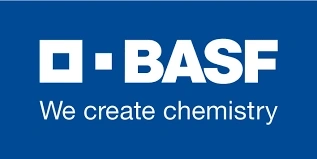
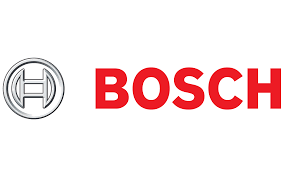

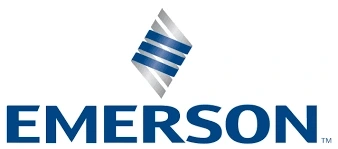

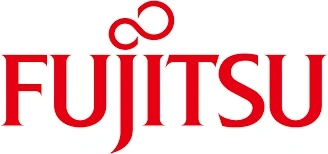
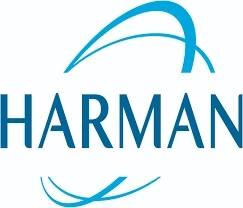
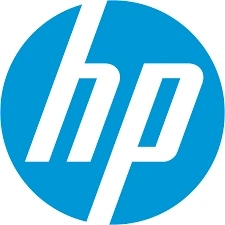

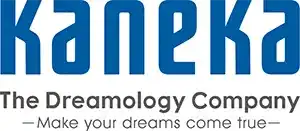
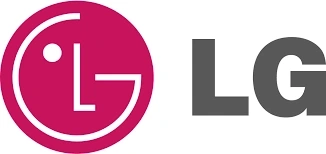

Thank you
Xcellent Insights has received your query!